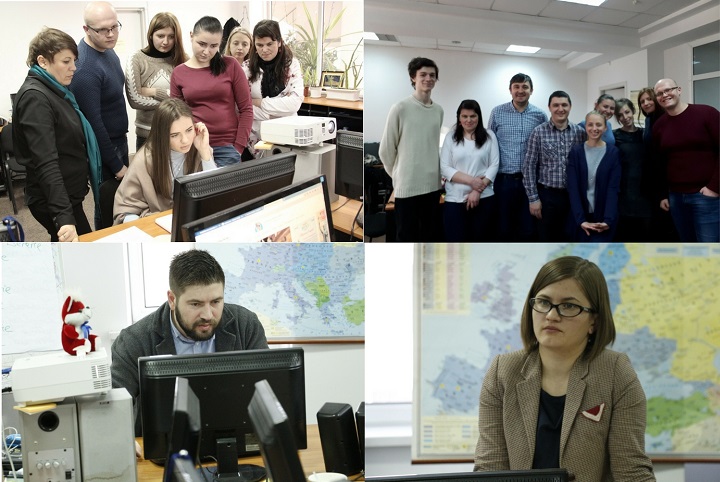Online Journalism: A Course That Goes Hand In Hand with New Media Trends

How do we write things to be published online? What distinguishes a text written for the radio, the TV, or a newspaper from the one written and placed in the virtual space? What elements and applications do we use to attract the attention of consumers and how can we become original online? There are only a few questions the SAJ students answered during the first course taught in 2018 – Online Journalism. Together with them, Liliana Barbarosie, Europa Libera radio journalist, Cristian Jardan, Unimedia.info portal director, and freelancer Tatiana Etco worked together with them.
The course lasted for two weeks and was divided into three modules. The first module, which lasted for five days, was focused on writing texts to be published online. Journalist Liliana Barbarosie explained to the students what an online article consists of, how to write a title, a lead, and intertitles, and what tricks journalists can use to make their materials as visible and attractive as possible.
“Whether the reader accesses the news or not depends on the title. A good title must be intriguing”, Liliana Barbarosie says, noting that this is one of the first rules of journalism in general and that of online journalism in particular. In order to become true professionals, the instructor recommends the SAJ students to do their work well, to draw inspiration from the best journalists from our country and abroad, and to tend to progress towards perfection in the profession they have chosen.
How can you make a journalistic material, having only a mobile phone at your disposal? This is what the students learned in the second module – Mobile Journalism, launched for the first time at the SAJ this year. Course instructor Cristian Jardan informed the students of various mobile accessories and applications that help journalists film and edit videos using only their mobile phones. To memorize how these applications worked, the future journalists made a video. The young people say they could not imagine that TV reportages can be filmed and edited directly on the phone as the only gadget to be used. “We have to adapt to the new trends”, student Alexandra Bodarev says at the end of the course.
How to stay original even online? How do we integrate various elements such as radio, video, photo, or text into the same material? What are multimedia tools and how do we use them correctly? This is what the students discussed within the framework of the third module of the course. Together with Tatiana Etco, they tested various applications, found out how hyperlinks, ThingLink, and slideshows were working, and at the end, they made a visual presentation in Timeline, Story Map, and Storify.
Today, the School of Advanced Journalism starts a course in Media Management.
